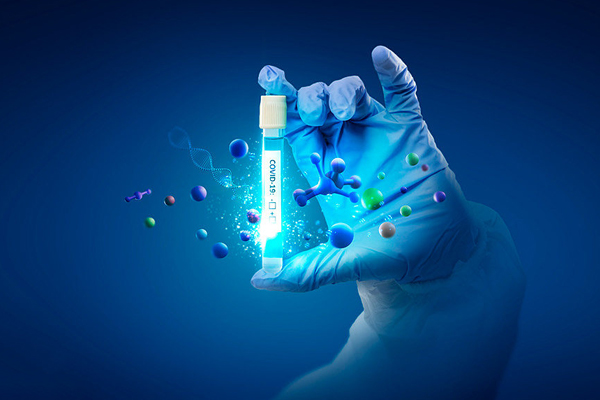Hefei Shitong Biotechnology Co., Ltd. was established in July 2019,
jointly founded by the doctoral team of Harbin Institute of Technology
(Shenzhen) and the top nucleic acid raw material industry team in China.
The company focuses on the field of nucleoside and nucleotide products,
and is committed to the production, research and development, and sales
of various series of products such as modified nucleosides, phosphamide
gene monomers, nucleotides, fluorescence, and chemiluminescent dyes;
-
 Rich experience
Rich experience -
 Quality products
Quality products -
 Advanced team
Advanced team -
 Professional services
Professional services
- IVD related materials
- Raw materials related to gene sequencing
- mRNA vaccine related raw materials
- DNA synthetic related raw materials
- RNA synthetic related raw materials
- Raw materials related to small nucleic acid drugs
- High quality triphosphate customized service
- Modified nucleoside customization service
- Customized services for phosphamide monomers
In vitro diagnosis (IVD) refers to the acquisition of diagnostic information through the detection of human samples (such as blood, body fluids, tissues, etc.) outside the human body. The principle is to determine the properties and quantities of substances in the body through the reaction intensity or speed of reagents and substances in the body outside the body, and to determine the physiological state of the human body. It has the advantages of speed, convenience, and effectiveness. In vitro diagnosis plays an important role in disease prevention, diagnosis, treatment monitoring, prognosis observation, health evaluation, and prediction of hereditary diseases.
We specialize in providing in vitro diagnostic reagents dNTP and various modified nucleotides.
First generation sequencing technology: It is an automated sequencing technology based on Sangar DNA strand termination and DNA chemical degradation sequencing, relying on radioisotope labeling for implementation. The second generation sequencing technology: four different dNTPs are labeled with fluorescence of different colors. When DNA polymerase synthesizes complementary chains, each additional dNTP releases different fluorescence. According to the captured fluorescence signal, the sequence information of the DNA to be tested is obtained. The third generation sequencing technology: the technology of sequencing while synthesizing does not require polymerase chain reaction amplification, and can directly observe and determine the number and sequence structure of DNA molecules.
The upstream industry chain of mRNA vaccines can be divided into three main links: plasmid template production, mRNA stock production, and encapsulation preparation. The co transcription capping technology is basically monopolized by foreign enterprises, such as the raw material market of PCR direct transcriptase and capping analogues. The post transcription capping technology has been gradually conquered by Chinese enterprises, and the domestic industrial chain supply is gradually improving.
We specialize in providing, modifying nucleotides and hat analogues.
One of the strategies for nucleic acid chemical synthesis is that each cycle of synthesizing nucleic acid chains undergoes the oxidation of efficient and chemically active nucleotides 3 '- phosphamide intermediates to form stable pentavalent phosphate triesters. It is the most commonly used method for automated solid-state synthesis of DNA&RNA.
We specialize in providing DNA phosphamide monomers and related supporting reagents.
RNA synthesis mainly includes the synthesis of siRNA and miRNA through chemical synthesis methods, and the synthesis of long stranded RNA through in vitro transcription methods. RNAi is a post-transcriptional gene silencing mechanism with high specificity and has been widely used in gene function research. Chemically synthesized RNAi is easy to apply, operate, and has high transfection efficiency. Researchers can use synthesized siRNA or miRNA for subsequent related experiments.
We specialize in providing RNA phosphamide monomers and related supporting reagents.
Traditional small molecule drugs and protein based drugs mostly target proteins, including kinases, receptors, antigens, etc. However, many diseases are caused by gene mutations that cause corresponding protein problems. The discovery of RNAi greatly broadens the source and development direction of human drugs, expanding drug targets to the upstream of proteins - RNA, allowing small nucleic acid drugs to be treated from the post transcriptional level. It has advantages such as short research and development cycle, rich candidate targets, high specificity, high efficiency, and long-term effectiveness.
We specialize in providing: OMe, F, MOE, and other modified phosphorous amide monomers.
Hefei Shitong Biotechnology has high-quality purification processes and a comprehensive quality inspection system, forming a high-quality customized purification platform for triphosphate. Relying on an experienced R&D team and numerous high-end instruments, we have created high-quality nucleoside triphosphate. We have always conducted in-depth research on product quality, solved the quality pain points of domestic products, and are committed to domestic substitution of imported products.
We provide customized services for various modified nucleosides in triphosphate, with product status, concentration, and salt type options available.
Nucleoside modification mainly involves modifying bases, which refer to derivatives of purines and pyrimidines and are components of nucleic acids, nucleosides, and nucleotides. The main base groups of DNA and RNA are slightly different, with the important difference being that thymine is the main pyrimidine base of DNA, which is extremely rare in RNA; On the contrary, uracil is the main pyrimidine base of RNA and is rare in DNA.
We specialize in providing: OMe, F, MOE, and other modified nucleosides.
Phosphosamide monomers are essential for synthesizing genes, mainly including DNA series, RNA series, and their derivatives. It is possible to modify positions such as bases and sugar rings, and further synthesize them into phosphorous amide monomers. Compared with unmodified nucleic acids, these modified nucleic acids show stronger binding affinity, sequence specificity, thermal stability and nuclease resistance.
We specialize in providing customized services for various phosphamide monomers.
Add: Building 306, No. 6, Changxin Village, Tianchang Road, Yaohai District, Hefei City, Anhui Province
Tel: 15555170917/0553-8291009
Email: stongbio@stongbio.com
- IVD related materials
- Raw materials related to gene sequencing
- mRNA vaccine related raw materials
- DNA synthetic related raw materials
- RNA synthetic related raw materials
- Raw materials related to small nucleic acid drugs
- High quality triphosphate customized service
- Modified nucleoside customization service
- Customized services for phosphamide monomers















